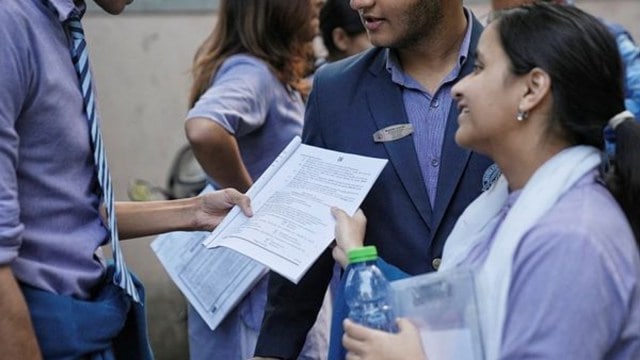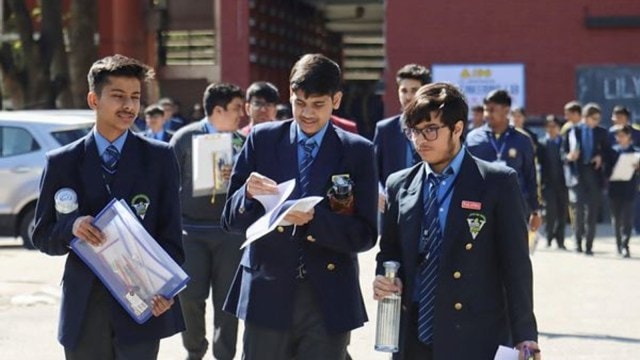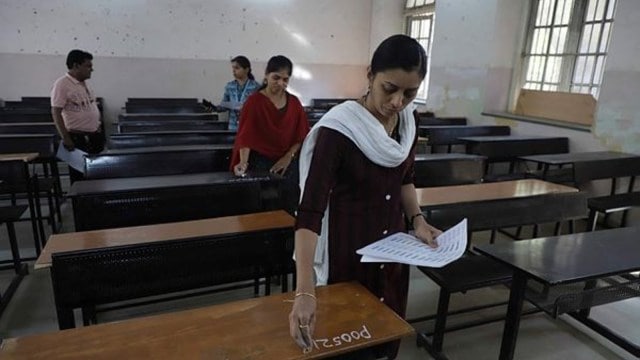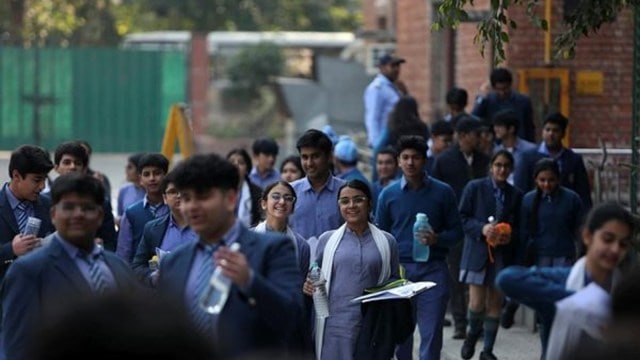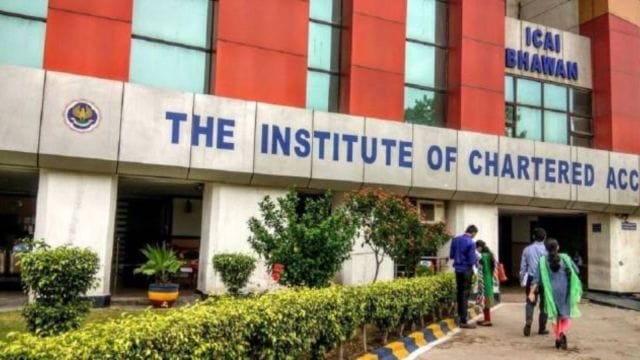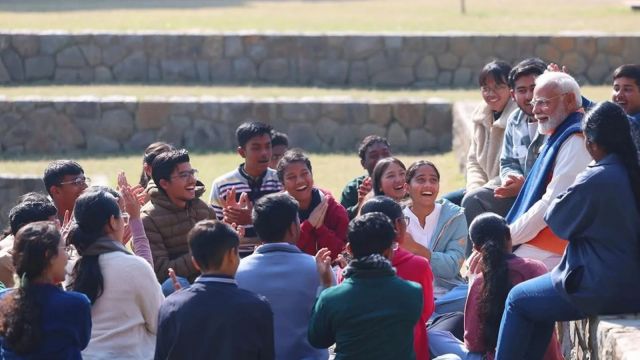
Behind PM Modi’s ‘ek rahenge toh safe rahenge’ poll pitch
At a rally in Maharashtra’s Vidarbha region last Tuesday, Prime Minister Narendra Modi said if people lose their unity, the Congress would snatch away their reservation benefits. “Ye mera aagrah hai: hum ek rahenge toh safe rahenge (I propose: if we remain united, we will be safe),” Modi said at the public meeting in Chimur in Chandrapur district.
The PM has been using this slogan and another iteration of it — in his first poll rally in Maharashtra on November 8 he said, “Ek hai toh safe hai (together, we are safe)” — in Maharashtra since last week. The first time the PM used his slogan was in Kevadia in Gujarat on October 31, the birth anniversary of Sardar Patel that is observed as National Unity Day, in an attempt to get Scheduled Castes (SCs), Scheduled Tribes (STs), and Other Backward Classes (OBCs) as unified blocs rather than splintered groups.
The PM’s pitch signalled that in the face of the Congress’s attacks that it posed a threat to the Constitution and reservation, the BJP was sticking to its project of welding the social justice politics of “Mandal” with “Kamandal” that stands for the politics of constructing a Hindu identity across upper castes, OBCs, SCs, and STs. In line with this strategy, the BJP has also accused the Opposition party of siding with conservative Muslim elements to divert the OBC, SC, and ST quota pie to the minority community.
In a virtual interaction with BJP volunteers in Jharkhand on Monday, Modi sought to link the decline of the Congress with the rise of SCs, STs and OBCs as united blocs. He said when the Congress was all-powerful after Independence, people did not dare to talk about reservation as the “shahi (royal)” family, from Jawaharlal Nehru to Rajiv Gandhi, detested it. As a result, SCs, STs, and OBCs were divided into small castes at that time and lacked strength. “Gradually they began to understand what Babasaheb Ambedkar had been saying and strengthened themselves as SCs and STs. The Congress began to face challenges as a result. When OBCs became united around 1990, the Congress collapsed,” the PM said.
Modi alleged that the Congress hoped to weaken these communities and then snatch away their reservation. “Aur aap jaante hain ki isliye main lagatar kehta raha hoon ki ek rahenge to safe rahenge (That is why I have been repeatedly saying that you will be safe if you stay united).”
Union Home Minister Amit Shah on Saturday said the Congress was looking to give the share of OBCs, SC, and STs in the reservation pie to Muslims. Senior BJP leader Ravi Shankar Prasad also made this point at a press conference in Delhi on Tuesday, saying, “The BJP is clear that the Congress is conspiring with all the conservative, divisive elements in the Muslim community for the sake of votes as they are apprehensive about their imminent defeat … PM Modi says ‘ek rahenge to safe rahenge’ and they are making fun of it and knocking on the doors of the Election Commission.”
Read alongside this official party line, the “ek rahenge toh safe rahenge” pitch comes across as one aimed at Hindu unity, with a special message for those “Hindu” groups — SCs, STs, and OBCs — the Congress is trying to keep on its side using the caste census demand and the promise to breach the 50% quota cap.
With caste becoming a crucial political category around 1990, the Congress found the ground slipping beneath its feet as it lost its Dalit vote in UP.
In 1990, with Mulayam Singh Yadav as Uttar Pradesh CM ordering police firing at kar sevaks and Lalu Prasad as Bihar CM arresting L K Advani in Samastipur during the Ram Rath Yatra, Muslims also shifted from the Congress in UP and Bihar towards the socialists, making the former a marginal force in these two large states that have 120 Lok Sabha seats. This permanently deprived the Congress of clear Lok Sabha majorities.
The north Indian political arena woke up to two competing politics in the nineties: the BJP, or Kamandal, politics riding on the Ram temple wave, and the politics of the Samajwadi Party and the Bahujan Samajwadi Party riding the caste wave. Caste began to be seen as a counter to Hindutva, and vice versa.
By this time, the BJP, known in its earlier Jana Sangh avatar as an urban Bania-Brahmin party, began to reach out to OBCs and sections of Dalits as part of the social engineering experiment first led by K N Govindacharya. If a Dalit Kameshwar Chaupal laid the first brick of the Ram temple’s foundation-laying ceremony, Kalyan Singh, an OBC Lodh leader; Uma Bharti, another Lodh politician, and Vinay Katiyar emerged as Hindutva faces from among non-Yadav OBCs.
Sushil Modi became the party’s face in Bihar and the party decided to back an OBC Kurmi leader such as Janata Dal (United)’s Nitish Kumar as CM. The following decade saw the rise of the BJP’s OBC regional satraps: Narendra Modi, a Modh-Ghanchi, in Gujarat, and Shivraj Singh Chouhan, an OBC Kirar, in Madhya Pradesh.
Kamandal was trying to ward off the Mandal challenge but its central faces still were upper-caste leaders such as Atal Bihari Vajpayee, Advani, Sushma Swaraj, Rajnath Singh, and Arun Jaitley.
With Modi’s ascent in national politics, the BJP played its cards to the hilt in UP and Bihar, increasing OBC representation. With sweeps in the heartland states and expansion in the east from 2014 onwards, the BJP achieved a large measure of “Hindu unity” — core ideological support from the upper castes and fulfilment of demands for greater representation from OBCs, Dalits, and Adivasis — and this trend continued in 2019 too. The party also won many states with the support of large sections of the disadvantaged castes and it reciprocated by increasing ministerial representation for OBCs and Dalit leaders, and choosing a Dalit and then a tribal woman for the post of President of India.
The combination seemed unbeatable. But the Opposition pulled off a strong counter-narrative this year when it interpreted the 400-plus slogan of the BJP and NDA as a veiled attempt to change the Constitution and end reservation with a brute majority. It proved a success and the party came down from 303 to 240 seats in the Lok Sabha. Now, with the “ek rahenge” pitch, the BJP seems to be punching back in earnest to keep its project to unify all disadvantaged groups under the umbrella of Hindutva on track.

 Posts
Posts Sign up as a Teacher
Sign up as a Teacher